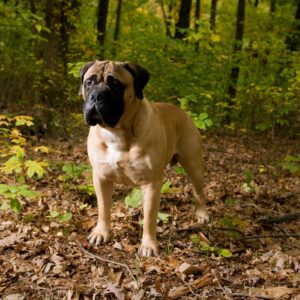The Bullmastiff: Gentle Giant and Fearless Guardian
Introduction:
The Bullmastiff, often referred to as a “gentle giant,” is a powerful and imposing dog breed known for its strength, loyalty, and protective instincts. Originating in England, the Bullmastiff was specifically developed to serve as a fearless and formidable guard dog. In this article, we will delve into the history, characteristics, temperament, care requirements, and notable contributions of the Bullmastiff.
History:
The Bullmastiff’s history dates back to 19th-century England, where gamekeepers sought a breed that could assist in guarding large estates against poachers. The Bullmastiff was created by crossing Bulldogs with Mastiffs, resulting in a dog with the strength of the Mastiff and the agility of the Bulldog. The breed’s primary role was to apprehend intruders without causing harm.
Bullmastiffs gained recognition as excellent guard dogs, and their popularity extended beyond estates to homes. The breed’s protective nature, coupled with a gentle temperament, has made it a sought-after family companion. The Bullmastiff was officially recognized by the American Kennel Club (AKC) in 1933.
Physical Characteristics:
1. **Size:**
– Height: 25 to 27 inches at the shoulder (males), 24 to 26 inches (females)
– Weight: 110 to 130 pounds (males), 100 to 120 pounds (females)
2. **Build:**
– Strong, muscular, and well-boned
– Broad head, short muzzle, and a distinctive black mask
– Short coat that lies close to the body
3. **Coat:**
– Short, dense, and weather-resistant coat
– Colors include fawn, red, or brindle, with a dark mask
Temperament:
The Bullmastiff is known for its even temperament, loyalty, and protective instincts. While they are gentle with their families, they are fearless and determined when it comes to guarding. Bullmastiffs are generally good with children, forming strong bonds with their human family members. However, early socialization is essential to ensure they are well-mannered and comfortable in various situations.
Despite their imposing size, Bullmastiffs are known to be calm and docile indoors, making them suitable for home living. They are not typically aggressive without cause, but their natural protective instincts make them excellent watchdogs.
Care Requirements:
1. **Exercise:**
– Bullmastiffs are a large, powerful breed with moderate exercise needs. Regular walks and playtime in a secure area are important to keep them physically and mentally stimulated.
2. **Grooming:**
– The breed’s short coat requires minimal grooming. Regular brushing helps manage shedding, and attention to ear cleaning, dental care, and nail trimming is important for overall health.
3. **Training:**
– Bullmastiffs are intelligent and respond well to consistent, positive reinforcement-based training. Early training and socialization are crucial to mold them into well-behaved adults. Given their size and strength, leash manners are particularly important.
4. **Nutrition:**
– Providing a well-balanced and nutritious diet is essential for the overall health of Bullmastiffs. Due to their large size, it’s important to monitor their weight and feed them a diet appropriate for their life stage. Consultation with a veterinarian can help determine the best dietary plan.
Notable Contributions:
Bullmastiffs have made notable contributions as guard dogs, especially in their traditional role of protecting estates. Their intimidating presence, combined with a gentle disposition, makes them effective deterrents while remaining loyal and affectionate with their families. Additionally, Bullmastiffs have found success in therapy work, providing comfort and companionship in various settings.
Conclusion:
The Bullmastiff, with its imposing presence and gentle heart, embodies the perfect balance between strength and temperament. Whether standing as a sentinel at a grand estate or lounging as a beloved family companion, the Bullmastiff’s loyalty, protective instincts, and affectionate nature continue to make it a revered and cherished member of the canine world.


Leave a Reply